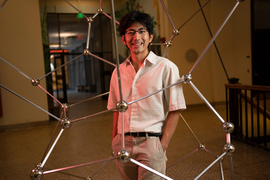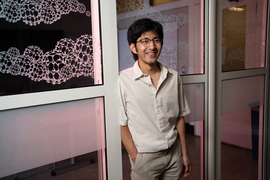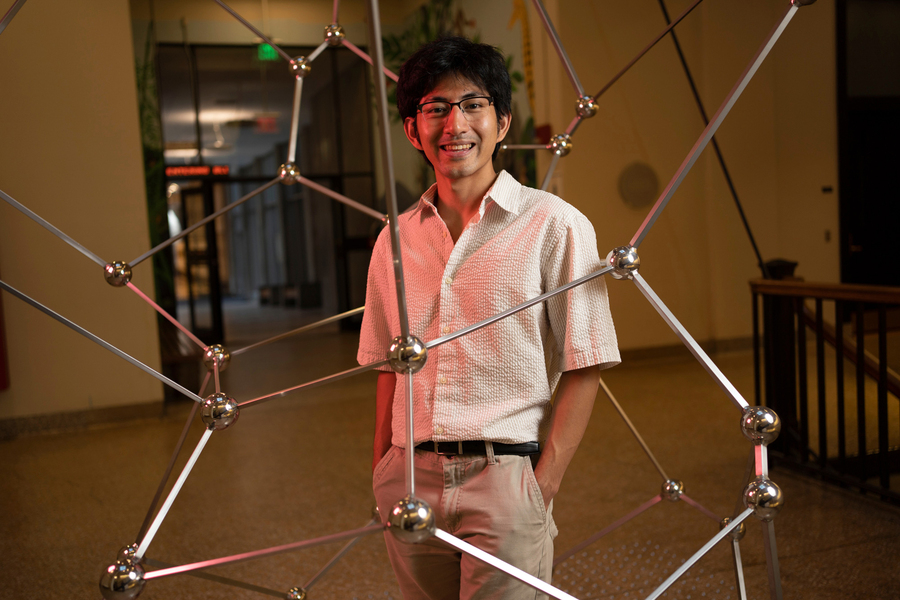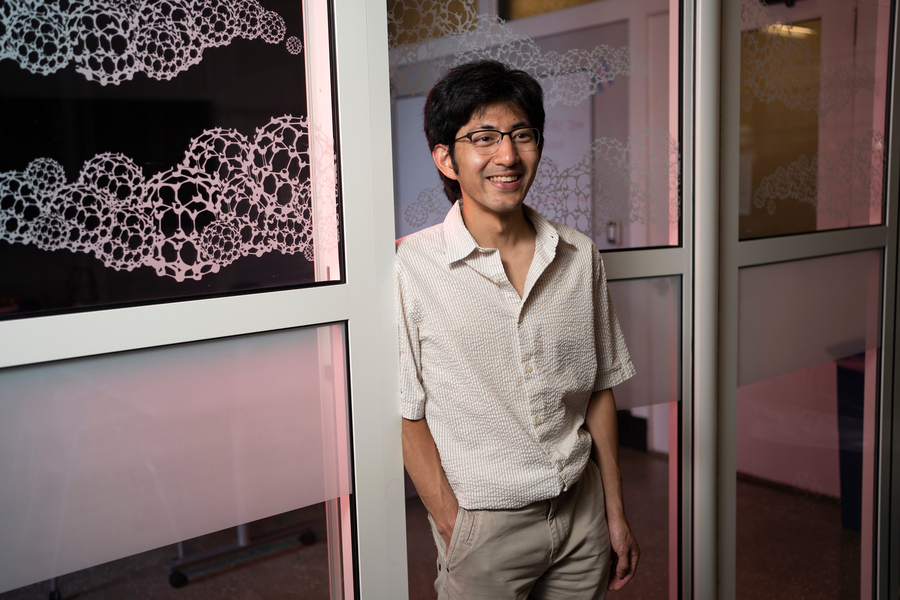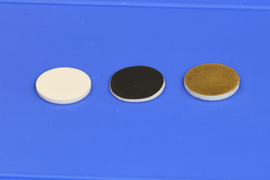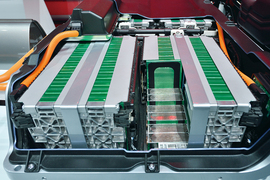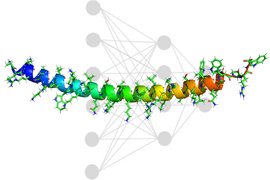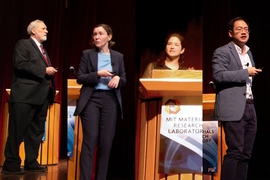To help combat climate change, many car manufacturers are racing to add more electric vehicles in their lineups. But to convince prospective buyers, manufacturers need to improve how far these cars can go on a single charge. One of their main challenges? Figuring out how to make extremely powerful but lightweight batteries.
Typically, however, it takes decades for scientists to thoroughly test new battery materials, says Pablo Leon, an MIT graduate student in materials science. To accelerate this process, Leon is developing a machine-learning tool for scientists to automate one of the most time-consuming, yet key, steps in evaluating battery materials.
With his tool in hand, Leon plans to help search for new materials to enable the development of powerful and lightweight batteries. Such batteries would not only improve the range of EVs, but they could also unlock potential in other high-power systems, such as solar energy systems that continuously deliver power, even at night.
From a young age, Leon knew he wanted to pursue a PhD, hoping to one day become a professor of engineering, like his father. Growing up in College Station, Texas, home to Texas A&M University, where his father worked, many of Leon’s friends also had parents who were professors or affiliated with the university. Meanwhile, his mom worked outside the university, as a family counselor in a neighboring city.
In college, Leon followed in his father’s and older brother’s footsteps to become a mechanical engineer, earning his bachelor’s degree at Texas A&M. There, he learned how to model the behaviors of mechanical systems, such as a metal spring’s stiffness. But he wanted to delve deeper, down to the level of atoms, to understand exactly where these behaviors come from.
So, when Leon applied to graduate school at MIT, he switched fields to materials science, hoping to satisfy his curiosity. But the transition to a different field was “a really hard process,” Leon says, as he rushed to catch up to his peers.
To help with the transition, Leon sought out a congenial research advisor and found one in Rafael Gómez-Bombarelli, an assistant professor in the Department of Materials Science and Engineering (DMSE). “Because he’s from Spain and my parents are Peruvian, there’s a cultural ease with the way we talk,” Leon says. According to Gómez-Bombarelli, sometimes the two of them even discuss research in Spanish — a “rare treat.” That connection has empowered Leon to freely brainstorm ideas or talk through concerns with his advisor, enabling him to make significant progress in his research.
Leveraging machine learning to research battery materials
Scientists investigating new battery materials generally use computer simulations to understand how different combinations of materials perform. These simulations act as virtual microscopes for batteries, zooming in to see how materials interact at an atomic level. With these details, scientists can understand why certain combinations do better, guiding their search for high-performing materials.
But building accurate computer simulations is extremely time-intensive, taking years and sometimes even decades. “You need to know how every atom interacts with every other atom in your system,” Leon says. To create a computer model of these interactions, scientists first make a rough guess at a model using complex quantum mechanics calculations. They then compare the model with results from real-life experiments, manually tweaking different parts of the model, including the distances between atoms and the strength of chemical bonds, until the simulation matches real life.
With well-studied battery materials, the simulation process is somewhat easier. Scientists can buy simulation software that includes pre-made models, Leon says, but these models often have errors and still require additional tweaking.
To build accurate computer models more quickly, Leon is developing a machine-learning-based tool that can efficiently guide the trial-and-error process. “The hope with our machine learning framework is to not have to rely on proprietary models or do any hand-tuning,” he says. Leon has verified that for well-studied materials, his tool is as accurate as the manual method for building models.
With this system, scientists will have a single, standardized approach for building accurate models in lieu of the patchwork of approaches currently in place, Leon says.
Leon’s tool comes at an opportune time, when many scientists are investigating a new paradigm of batteries: solid-state batteries. Compared to traditional batteries, which contain liquid electrolytes, solid-state batteries are safer, lighter, and easier to manufacture. But creating versions of these batteries that are powerful enough for EVs or renewable energy storage is challenging.
This is largely because in battery chemistry, ions dislike flowing through solids and instead prefer liquids, in which atoms are spaced further apart. Still, scientists believe that with the right combination of materials, solid-state batteries can provide enough electricity for high-power systems, such as EVs.
Leon plans to use his machine-learning tool to help look for good solid-state battery materials more quickly. After he finds some powerful candidates in simulations, he’ll work with other scientists to test out the new materials in real-world experiments.
Helping students navigate graduate school
To get to where he is today, doing exciting and impactful research, Leon credits his community of family and mentors. Because of his upbringing, Leon knew early on which steps he would need to take to get into graduate school and work toward becoming a professor. And he appreciates the privilege of his position, even more so as a Peruvian American, given that many Latino students are less likely to have access to the same resources. “I understand the academic pipeline in a way that I think a lot of minority groups in academia don’t,” he says.
Now, Leon is helping prospective graduate students from underrepresented backgrounds navigate the pipeline through the DMSE Application Assistance Program. Each fall, he mentors applicants for the DMSE PhD program at MIT, providing feedback on their applications and resumes. The assistance program is student-run and separate from the admissions process.
Knowing firsthand how invaluable mentorship is from his relationship with his advisor, Leon is also heavily involved in mentoring junior PhD students in his department. This past year, he served as the academic chair on his department’s graduate student organization, the Graduate Materials Council. With MIT still experiencing disruptions from Covid-19, Leon noticed a problem with student cohesiveness. “I realized that traditional [informal] modes of communication across [incoming class] years had been cut off,” he says, making it harder for junior students to get advice from their senior peers. “They didn’t have any community to fall back on.”
To help fix this problem, Leon served as a go-to mentor for many junior students. He helped second-year PhD students prepare for their doctoral qualification exam, an often-stressful rite of passage. He also hosted seminars for first-year students to teach them how to make the most of their classes and help them acclimate to the department’s fast-paced classes. For fun, Leon organized an axe-throwing event to further facilitate student cameraderie.
Leon’s efforts were met with success. Now, “newer students are building back the community,” he says, “so I feel like I can take a step back” from being academic chair. He will instead continue mentoring junior students through other programs within the department. He also plans to extend his community-building efforts among faculty and students, facilitating opportunities for students to find good mentors and work on impactful research. With these efforts, Leon hopes to help others along the academic pipeline that he’s become familiar with, journeying together over their PhDs.
